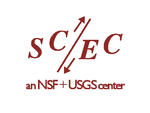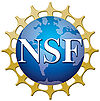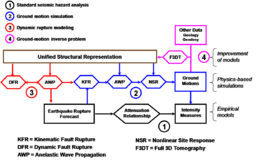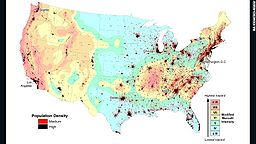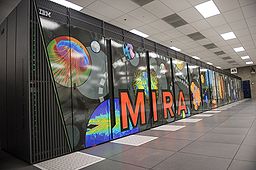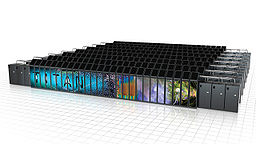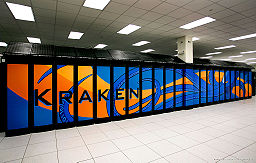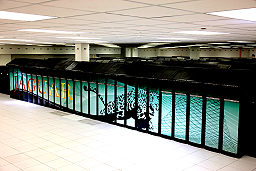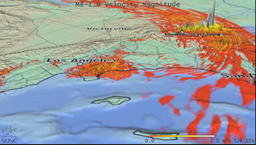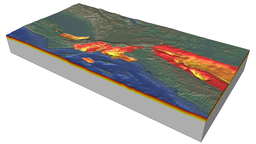CME Projects
Contents
- 1 CME Project Information
- 2 SCEC Scientific Software
- 3 Recently Updated Entries
- 4 CME Software
- 5 Supercomputing
- 6 CME Studies
- 7 CME Outcomes
- 8 CME Activities
- 9 Recent Earthquake Information
- 10 SCEC and CME-related Web Sites
- 11 SCEC Computer Science Collaborative Organizations and Resource Providers
- 12 Overviews and Summaries
- 13 CME Research Support
- 14 See Also
- 15 License
CME Project Information
- E-Trees
- CME Project
- Geoinformatics Project
- Geoinformatics Phase II Project
- High-F Project
- SEISM Project
- SEISM2 Project
- PetaSHA3 Project
- High-F
- CyberShake Project
- UCERF3
- UCVM
- UCERF3
- F3DT
SCEC Scientific Software
Recently Updated Entries
- UCVM
- CCA
- CyberShake Study 15.10
- ABZ2015
- VirtualBox_Configuration
- UCVM Meshing
- Duration
- NSCI
- ORCID
- CyberShake_Review_Process
- SCEC Structure
- SEISM2 Project
- CFM
- Data Quality
- INCITE 2016
- AGU Fall 2015
- Data Citation Levels
- AWP-ODC-FDQ
- SCEC_Web_Development_Home_Page
- Broadband Platform
- Comparison of Compute Nodes
- High-F Project
- CyberShake Project
- Central California Velocity Model
- EMI Conference
- HighF_v14.12_Data_Comparison
- SCEC_Site_Effects_Workshop_2015
- SCEC_UGMS_Committee_Meeting_4
- UGMS
- 3D Modeling
- 2015 SCEC SSI Workshop
- Evaluation of SCEC Broadband Platform Phase 1 Ground Motion Simulations Results
- 2014 SCEC-ERI Summer School for Earthquake Science
- CFM-5
- SCEC AM 2014
- IDC Award Notice Nov. 2013
- NCEE Meeting 2014
- OLCF Users Meeting
- Chino Hills 1D and 3D
- UseIT
- SSA
- SCEC Data Storage
CME Software
- Broadband Platform
- UCVM 14.3.0
- UCERF3.0
- CSEP Distribution
- CVM-S5
- SI2 Meeting 2015
- AWP-ODC
- CVM-S5
- CVM-H
Supercomputing
CME Studies
CME Outcomes
CME Activities
- SCEC UGMS Committee Meeting
- SI2 PI Meetings
- CISN
- SCEC Software
- CyberShake 1D Model
- UCVM
- SWUS Project
- Hadley-Kanamori
- Northridge 10Hz
- Earthquake Simulation Animations
- SSA
- Credits
- CMM4
- AGU
- SC
- SC13 SC'13 Denver
- SC12 SC'12 Salt Lake City
- UCERF3 Extended Earthquake Rupture Forecast
- CVM-S4.26 Proposed Final Model
- MFA
- GTL
- ShakeOut 2013 Response Planning
- UCVM 13.9.0
- CVM-H
- CISN Testing Center
- AWP ODC GPU
- SCEC Technical Activity Groups
- Related Project Sites
- Staff
- Wiki Statistics
- Usability
- XSEDE/PRACE Workflow Workshop
- California CVM Meeting - 3 April 2012
- Data Management
- SCEC Visualization Projects
- Cloud Computing
- Geoinformatics Project
- NWSC ASD
- CME Project
- Broadband Platform
- ALCF Early Science Program Investigators Meeting
- XSEDE13 Meeting Web Site - San Diego, California
- SC13 Meeting Web Site - Denver, Colorado
- CyberShake Study 13.4
- Software Metrics
- CME Project
- Dublin Core Metadata
- UCVM
- CVMS4 versus CVMSI22 plots
- UCERF3 Images
- CyberShake Wiki - Internal
- SCECpedia Public Wiki
- Broadband Platform
- Broadband Release Info
- Broadband Internal Wiki
- Broadband User Guide v13.9.0
- Production Run Readiness Review
- Broadband Platform on HPCC
- Broadband Sprints
- Fling Study
- Broadband Platform on HPCC
- Broadband Validation Events
- Broadband Platform Meeting - 7 March 2012
- Broadband User Guide Current
- PEER Data Format
- Broadband Platform Working Group
- Blue Waters
- CyberShake
- Seismic Intensity
- Null Hypothesis
- IRC
Recent Earthquake Information
An important goal of SCEC earthquake research is to reduce the hazard from future earthquakes by developing physics-based predictive models of earthquake processes.
- Public CME Website
- Collaborative SCEC Wiki
- SCEC Home Page
- SDSC High Performance Geocomputing Laboratory
- PetaSHA3 Project
- CME Movies and Animations
- CVM-Toolkit
- SCEC Websims Data Management Site
- SCEC CSEP Testing Center
SCEC Computer Science Collaborative Organizations and Resource Providers
- SDSC
- SDSC HPGeoC
- SDSC Visualization Services
- Scientific Workflows at USC/ISI
- Fault Tolerant Computing at CSM
- USC HPCC
- PSC
- NICS
- NCCS
- TACC
- NCSA
- Blue Waters
- Open Science Grid
Overviews and Summaries
CME Research Support
Southern California Earthquake Center (SCEC) and SCEC/CME research is funded by National Science Foundation (NSF) Cooperative Agreements EAR-0106924 and USGS Cooperative Agreement 02HQAG0008, and NSF awards EAR- 074493, EAR-0949443, OCI-0832698, and OCI-0832698. This research is supported by an allocation of advanced computing resources provided by the National Science Foundation (NSF). Computations are performed on Kraken (a Cray XT5) at the National Institute for Computational Sciences. Computations and data management are performed at San Diego Supercomputer Center, where the iRODS Data System is used. The Texas Advanced Computing Center (TACC) at The University of Texas at Austin, the National Center for Supercomputer Applications (NCSA) and the Pittsburgh Supercomputer Center (PSC) provide HPC resources. Computations are supported by the University of Southern California Center for High-Performance Computing and Communications (HPCC). Our research uses HPC resources provided by the U.S. Department of Energy (DOE) through an Innovative and Novel Computational Impact on Theory and Experiment (INCITE) program allocation award. Computations were performed on Jaguar, which is part of the National Center for Computational Science (NCCS) at the Oak Ridge National Laboratory which is supported by under DOE Contract No. DE-AC05-00OR22725. This research uses resources of the Argonne Leadership Computing Facility at Argonne National Laboratory, which is supported by the Office of Science of the U.S. Department of Energy under contract DE-AC02- 06CH11357. The Ohio State University one-sided MPI Communication research was supported through NSF HECURA-1 (CCF- 0833169/139/155). This research received technical and user support through the Advanced Support for TeraGrid Applications (ASTA) program.
See Also
Additional information about SCEC earthquake system science research is available on related SCEC web sites including:
License
Except as otherwise noted, the content of this page is licensed under the Creative Commons Attribution 3.0 Unported License, and code samples are licensed under the Apache 2.0 License. For details, see our Site Policies.
![]()
